Before we launch into our Winter 2023 Update there are a few important items that we want to draw your attention to:
- The renovations are complete on our new office space, and we have officially moved one floor up to the 23rd Floor of Centennial Tower West. Wellington Altus will continue to occupy the 22nd Floor as well but our team, reception etc. have all moved up to the 23rd floor.
- We want to bring your attention to a recent change in the reporting requirements for Trusts. In addition to several other changes, it appears that the CRA is taking the position that a “Bare Trust” exists when someone is listed on legal title for assets but do not have a beneficial interest. For example, a parent making a child a joint owner on a home or bank/investment account for estate planning purposes. As I understand this, the implication of this view is that a full trust tax return (i.e.- A T3) will have to be filed for the joint property. If you are in this position, we have a topic paper available from our Advanced Wealth Planning team. In addition, please seek tax advice to determine what reporting responsibilities you may have.
- We conducted a straw poll of accounting firms and shared some tax season tips to make this year’s (and future years) filing easier via email and social media. If you would like another copy – please let us know!
Like Q4 2022, Q1 2023 was a very volatile albeit positive quarter for both equity and fixed income markets. North American Equity markets rose sharply in January, experienced a mild pull back in February before finishing a volatile March on a positive note. Key global Fixed Income markets were also volatile. Per Refinitiv, benchmark U.S. Government bond prices rose in September (rates down), then fell somewhat in February (rates up) before resuming their uptick in March (rates down). During Q1, commodity markets were generally lower as the Bloomberg Commodity Index declined. Furthermore, as per Refinitiv – market-based expectations of inflation remain well-contained with longer term inflation “break even” rates ranging from 5-year to 30-years all remaining below 2.50% at the time of writing. One year inflation break evens closed out the quarter at approximately ~3% well below their March 2022 peak (Refinitiv).
Again, much of the market volatility in the quarter was tied to the debate around the path for rates and inflation. The market has become very reactive to every data point with participants/pundits seemingly changing views from week-to-week. Up until mid-March, GCBs (Global Central Banks) remained, for the most part, committed to taking short-term rates higher and pointed to strong labor market data and elevated year over year inflation to support their case for “higher for longer”. This view did moderate with the Bank of Canada holding rates steady on March 8th and the U.S. Federal Reserve appearing to acknowledge the stress the rapid rise in rates has caused. Those that believe we are near to the end of the rate-hike/inflation cycle continue to point to stress in the financial system encapsulated by the failure of a number of U.S. Regional Banks, rapidly cooling monthly inflation data, lower commodity prices, revisions to labor data which point to a much weaker jobs (and wages) picture and many forward-looking data points that indicate that the key drivers of recent inflation are cooling off.
Based on questions I have been getting from clients I have collected a few thoughts below. As always, the focus of the Kluge Wealth Advisory Group is on preparation and not prediction. Irrespective of any views, we always acknowledge and prepare for a wide range of events and outcomes. That said, the picture painted by my “risk dashboard” remains cautiously optimistic about the path forward. As a result, we recommend that, where risk tolerance and objectives allow, investors consider reducing cash and buying both high quality equity and fixed income.
First, there were a lot of questions about what we have seen in the U.S. and European banking sectors with the stress placed on the U.S. Regional banks and the failure of Silicon Valley Bank & Credit Suisse. For now, it appears that we have experienced a stress event and not a crisis event. Rapidly rising interest rates present challenges to financial institutions like the U.S. Regional banks whose business models can heavily rely on paying low interest on deposits and earning higher interest on loans and bonds. If investors remove deposits to buy higher yielding fixed-income securities, the sudden demand for deposits can stress the banks’ balance sheet if it is not properly hedged. In my view, both SVB and Credit Suisse were mismanaged and as a result were venerable to whatever the “next stress event” was going to be. We continue to monitor for further signs of stress in this area.
Secondly, we continue to see a rebound in fixed-income assets evolve. This has been driven significantly by the decline in long-term, medium- and now short-term interest rates that has taken place since the low in price (high in yields) in October. At this point, the “bond math” points to attractive forward-looking returns. For example, in the PIMCO Monthly Income fund the Yield to Maturity (YTM) for the portfolio is reported as ~8.5% per year. This means that all else equal, the return from interest income and capital gains when all the bonds mature over the next few years will equal 8.5% per year. Although nothing is guaranteed, if rates stay reasonably stable from here, it should be very easy for the manager to generate this return by holding, collecting interest, and earning capital gains as the bonds mature. If rates continue to decline, then short-term returns could be substantially higher as future returns get pulled into the present via higher bond prices. Because bonds mature at a known “par” value, it pays to be patient and remember the long term with fixed income.
Thirdly, – and at risk of sounding like a “broken record” – both individual and institutional investors remain very negative on the markets despite recent positive returns. Examples of this negativity include: data from the recent Bank of America Fund Manager Survey shows that allocations to equities are at very low levels. In fact based on the survey data, equity allocations have not been this low since 2004 – which is even lower than during the Financial Crisis in 2007/2008! Separately, the American Association of Individual Investors survey continues to show that private client investors have very low positive or “bullish” sentiment towards stocks. Furthermore, data from Fundstrat shows extremely high cash balances in U.S. brokerage accounts.
This pervasive negativity has been and remains a significant contrarian positive – history is very clear that extremes in sentiment and positioning in either direction usually resolve in the opposite direction. The last six months have allowed us to see this phenomenon in real time – investors expect poor results, but markets are up. Without a doubt, markets have been confronted by a multitude of events (war, rate hikes, inflation, bank stress etc.) but as this moment they have recovered off their October lows and held key technical levels in the face of serious stress events – they have “bent but not broken”. That, coupled with the continued leadership of sectors that tend to do well as the economy is in recovery (technology, homebuilding etc.), and a continued drop in the U.S. dollar index (a rising USD vs. world currencies is usually a sign of serious stress) point to underlying resilience. Finally, amongst many other technical indicators, Fundstrat points out that since 1950, two quarters of positive U.S. equity returns has been 100% reliable in confirming the end of the previous “bear market” and the start of a new positive trend. Again, this general type of statistical analysis can be wrong, but it presents a pattern that has had a powerful tendency to repeat throughout many different historical circumstances.
Finally, it is important to remember that the economic and market cycles do not necessarily align so although the current situation feels unsettled, it would be totally normal for the market to begin its recovery before the economy has begun its recovery. This has the potential to create some scary headlines but since the markets are forward looking vehicles there would be nothing unusual about it occurring. Maintaining an investment discipline in the face of “the herd” is very difficult which is why most investors do not do it despite the historical profitability of doing so. In all the noise we have been hearing, it is easy to forget that Q1 2023 was the second positive quarter in a row with portfolios rebounding on the back of strength in both equity and bond markets. No one knows the future but the best chance of success we have is to understand and make the types of decisions that have proven to be successful. Again, to paraphrase Warren Buffet – we want to be greedy when others are fearful and fearful when others are greedy.
In the portfolio entrusted to us we have taken several actions since our last update. First, we have conducted our routine quarter-end review of all holdings and have adjusted the names in the portfolio to ensure that each one reflects our desire to hold a diversified basket of high-quality dividend paying stocks that are in an uptrend. Part of our discipline involves looking at the worst performing quartile of stocks and reducing or removing them in favor of ones that have a better fundamental and technical profile. Due to the volatility caused by the U.S. Regional banks, we started this process a couple of weeks early to be opportunistic. Secondly, at the margin we have increased our weighting towards U.S. equities as the U.S. markets appear better positioned from a sector perspective. U.S. markets have a higher weight to high quality technology, healthcare, consumer discretionary and industrial stocks vs. European or Canadian markets.
These are uncertain times, but I firmly believe that by maintaining a disciplined approach, maintaining a long-term view and focusing on proven behaviors, that we can profit from the current moment.
Please feel free to call anytime!
Thank you.
Conrad Kluge




